This is not end yet. Why Russian Ural drowning and whether flood will reach Kazakhstan
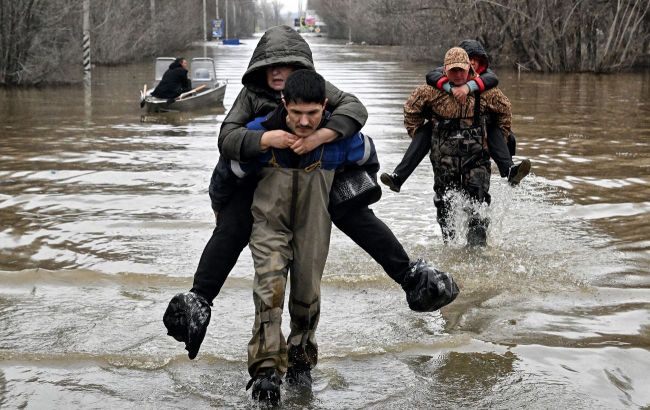 Photo: Flooding in the Russian Ural (Getty Images)
Photo: Flooding in the Russian Ural (Getty Images)
Last week, due to flooding on the Ural River in the Russian Federation, a dam burst. As a result, the city of Orsk in the Orenburg region was submerged, casualties were reported, and there is a threat of flooding in other regions.
RBC-Ukraine has compiled the main information known at the moment.
The material was prepared using information from regional media, Meduza and Current Time, Telegram channels of the authorities of the Orenburg region, and the cities of Orenburg and Orsk.
Contents
- Dam is breached. How the Ural River is flooding Orsk, Orenburg, and beyond
- What is happening now, when is the peak, and which regions are at risk
- 'Putin, help.' What the affected people are dissatisfied with and what they want
- What kind of dam it is, reasons for the breach, and where the water from the Ural River will go next
Dam is breached. How the Ural River is flooding Orsk, Orenburg, and beyond
Since the end of March, over 20 regions in Russia have been affected by floods. The cause is attributed to the snowy winter and sudden thaw. The most serious consequences are observed in the Orenburg region, a region in the Volga region bordering Kazakhstan to the south.
At the beginning of April, a state of heightened readiness was introduced in the region, and on the 4th, a state of emergency was declared. And already in the evening of the next day, in Orsk (the second largest city in the Orenburg region), the embankment on the Ural River burst. Over 4,000 houses on the left bank in the area of the Old Town were affected by the flood.
By the morning of April 6, the local authorities had evacuated almost 4,000 people, and Mayor Vasily Kozupitsa announced that the water would not recede for at least one to two weeks.
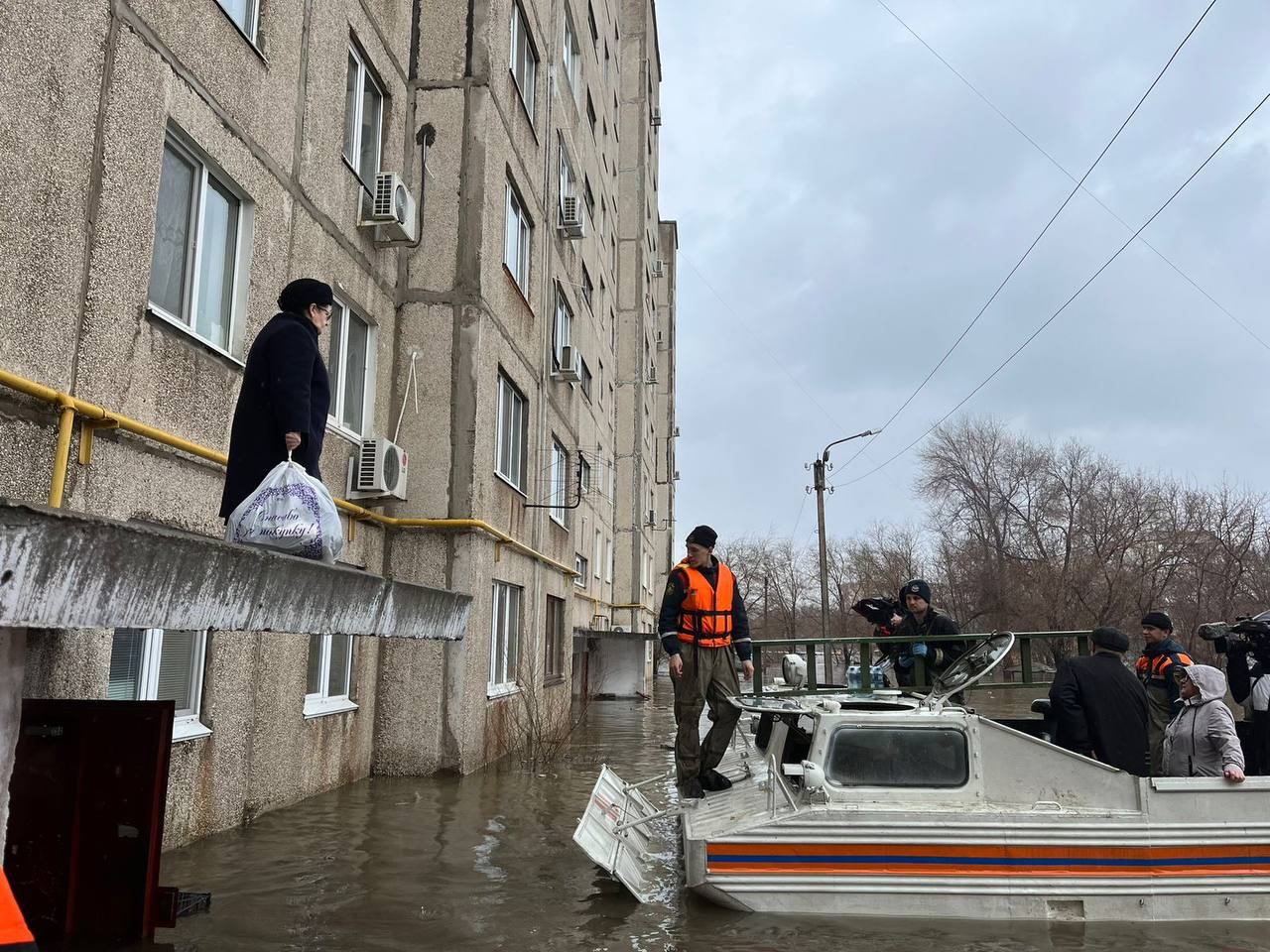 Photo: Flooded city of Orsk (t.me/rbc_news)
Photo: Flooded city of Orsk (t.me/rbc_news)
Following this incident, a criminal case has been initiated for negligence and violations during the construction of the dam. Local prosecutors stated that the dam burst due to "untimely measures" regarding its maintenance. The water level in the river exceeded the design level of the hydraulic structure by 4 meters.
On the evening of April 6, a second breach occurred. This time, the right bank was flooded, affecting several settlements near Orsk, where evacuation efforts also began. Following this, the Minister of Emergency Situations flew to the Orenburg region. Governor Denis Pasler described the flood as the most powerful in history.
"It is evident that the flood of 2024 is the most voluminous in the entire history of observations in the Orenburg region. We continue to fight the disaster. In two to three days, it will become clear when to expect the water level to decrease," he wrote in his Telegram.
By the morning of April 7, the water from Orsk had reached Orenburg, and around a thousand houses were flooded. Within the first day, the water level in the Ural River in the regional center increased by 91 cm, and by the second day, it rose by nearly 30 cm more. According to Mayor Sergey Salmin, the water level will only continue to rise in the coming days. The flood has been declared a federal-level natural disaster, with preliminary losses totaling over $220 million.
Areas at risk were planned to be disconnected from electricity and gas supply. By the morning of April 8, over 10,000 residential buildings were flooded in the region. Evacuation also began in the neighboring city of Novotroitsk. Another river, the Yelshanka, began overflowing in Orsk, and a third breach occurred near the settlement of Lesotorgovoe.
The situation continued to worsen in Orenburg.
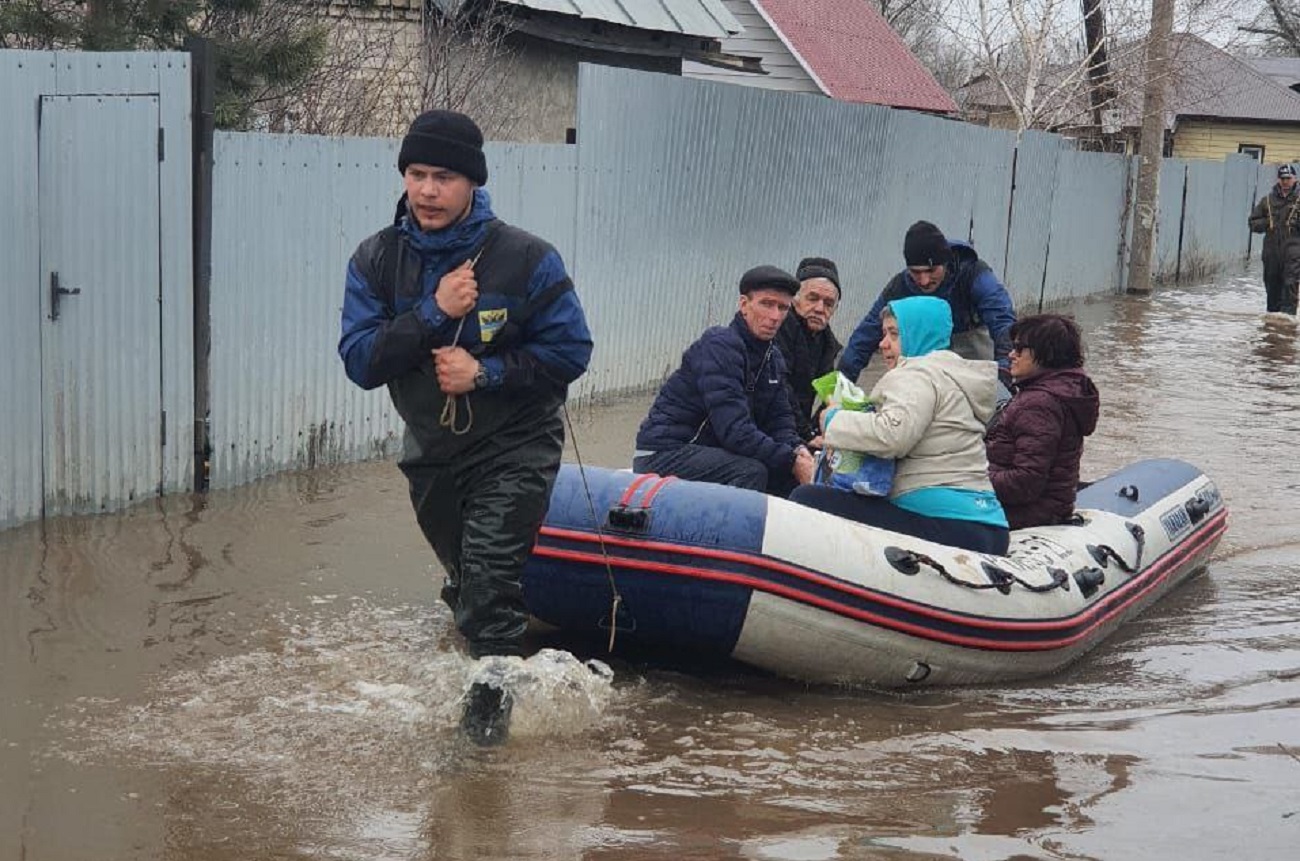
Photo: Flooding in Orenburg (orenburg.media)
"To everyone in the flooded area, it is necessary to leave your homes. Do not delay evacuation! The situation will only worsen in the next two days. According to experts' forecasts, the water level will exceed dangerous levels. Do not wait for this! Leave right now," Mayor Salmin wrote in his Telegram.
What is happening now, when is the peak, and which regions are at risk
As of April 9, the situation remains tense. Sirens are occasionally sounding in Orenburg, and authorities continue to urge evacuation. According to the Hydrometeorological Center, the water level in the Ural and Sakmara rivers near the city is approaching a critical mark. A further increase of 5-40 cm is forecasted for tomorrow.
It is anticipated that the water level will continue to rise today and tomorrow, reaching its peak on April 10. A number of districts in Orenburg, as well as over a dozen settlements and country houses, will be affected by flooding.
According to revised data, more than 10,000 residential buildings and almost 13,000 country plots are flooded in the region overall. In Orsk, where the situation is most severe, nearly 7,000 houses are flooded. Mayor Vasily Kozupitsa reported that the level of the Ural River had dropped by 39 cm by Tuesday morning. 260 streets are still submerged.
As of today, the water is gradually receding from the Old Town, the bus station, and the private sector. According to preliminary data, the level of the Ural River is not expected to return to normal until April 25.
Interestingly, there isn't a mass evacuation of residents in Orsk. According to them, looters have become active in the city, stealing items, and breaking into shops and houses. Therefore, locals are reluctant to leave their homes unattended.
The flooding has not only affected the Orenburg region. Severe floods have led to evacuations in other regions as well.
In the Chelyabinsk region, the threat of flooding was discussed as early as last week. Floods have reached the cities of Yuzhnouralsk and Troitsk. It was reported that the embankment in Troitsk, recently renovated for over $1 million, was submerged. Local emergency services describe the situation as calm, with up to 300 people evacuated, five buildings flooded, and over 80 country plots submerged.
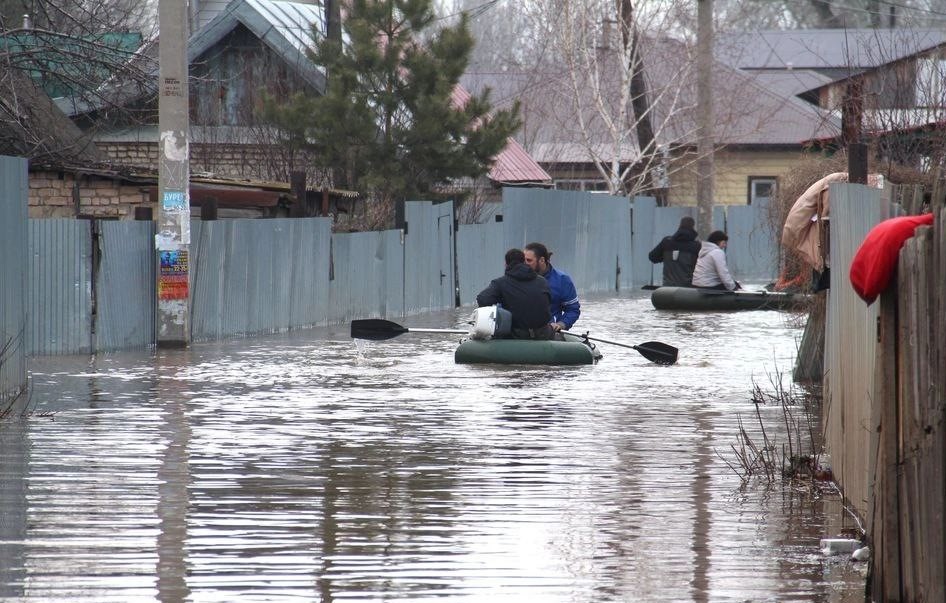
Photo: Situation in Orenburg (ural56.ru)
In the Kurgan region, 21 houses, up to 100 country plots, seven roads, and one bridge are flooded. All schools in Kurgan have switched to remote learning, with four municipal districts in the risk zone. If the water rises to the maximum allowable levels, it could flood over 60 settlements.
In Bashkortostan, nearly 50 houses in 20 municipalities are flooded. The flood peak is expected in the third decade of April. Residents are asked to prepare for possible evacuation. In the Tyumen region, preparations are underway for rising water levels in the Ishym and Tobol rivers. People are urged to leave their homes now, without waiting for the flood.
Despite being 700 km away from the Orenburg region, preparations for floods are underway in the Perm Krai. Here flows the full-flowing Kama River along with numerous smaller rivers. Regional emergency services recommend insuring the property and preparing emergency kits.
'Putin, help.' What the affected people are dissatisfied with and what they want
Reports of casualties began to arrive shortly after the first breach in Orsk. By the morning of April 6, the bodies of three men were found, one of whom had previously refused to evacuate. Later, mass hospitalizations of people with poisoning became known. They were diagnosed with norovirus - one of the most common gastrointestinal infections. Due to this, the water supply in the infection zone was suspended.
The shortage of drinking water became one of the main problems. People are advised to boil and filter tap water if bottled water is not available. Water is also scarce in stores. It is reported that people are traveling to the Chelyabinsk region and Bashkortostan to get water, but prices have doubled or tripled. In addition to water, bread is running out in the city.
The day before, dissatisfied with the actions of the authorities, Orsk residents staged a protest. They demanded effective measures to combat the flood and criticized the compensation amounts: 50,000 rubles for partial property loss and 100,000 rubles for complete loss. Demonstrators shouted "Shame" and "Putin, help" outside the city administration building. The police called the gathering illegal and demanded dispersal. Before this, the regional prosecutor's office had threatened locals with "serious consequences."
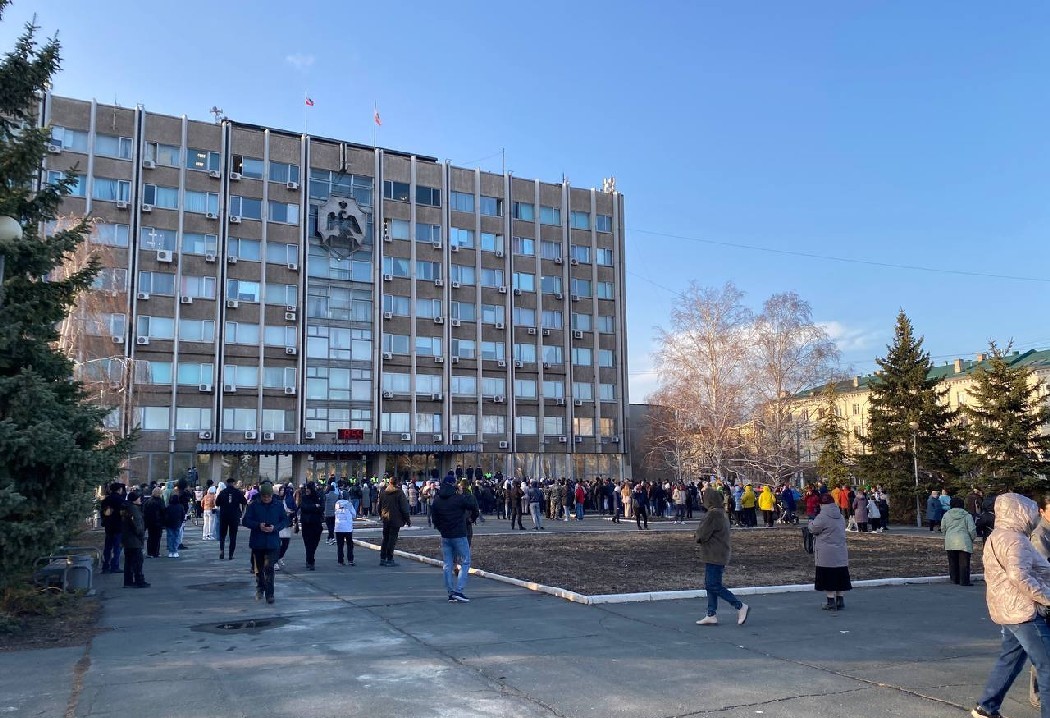
Photo: Dissatisfied residents of Orsk staged a protest (nokstv.ru)
It was reported that people surrounded Mayor Vasily Kozupitsa and asked if there was a restoration plan. State television channels aired an interview with the head of the Emergency Situations Ministry, Aleksandr Kurenkov, who stated that "evacuation was announced a week ago, but people did not make a decision, thinking it was some kind of joke."
"This situation could last another week. These people are sitting at their windows, what will they eat? Each of them will have to be brought food," he added.
Residents of Orsk were outraged by the supposedly pre-announced evacuation, as it was declared in the flooded areas only after the dam breach. An initiative group was invited to the administration, but Governor Pasler demanded that people put away their phones and not record the negotiations.
As a result of the meeting, it became known that flood victims who are not in temporary accommodation centers will receive an additional 10,000 rubles per month (a little over 100 dollars) for housing rent for six months. Utility payments on flooded territories will also be canceled, and loans will be restructured.
What kind of dam it is, reasons for the breach, and where the water from the Ural River will go next
The dam construction in Orsk began in 2010, and the project was completed in 2014. The dam was specifically needed to protect the city from severe floods that previously inundated buildings. The construction cost amounted to 930 million rubles (approximately 28 million dollars at the time). The purpose of the dam was to permanently solve the problem of flooding during floods.
"The flood this year is the first and serious test of the dam's strength," stated the mayor of Orsk two days before the breach. Thus, it failed the test.
According to Meduza, in 2014, the construction revealed purchases of materials at inflated prices and many unfinished works. The financial oversight service estimated the losses to the customers at 50 million rubles. In the summer of 2020, nearly 40 violations were found during the dam's operation. In December 2023, the municipality entered into a contract for the maintenance of the dam for a much lower amount than in previous years.
Regarding the breach, inaccuracies were likely made during the design stage, according to experts cited by the source. On April 6, the authorities stated that the dam was designed for a level of 5.5 meters, although at that time the water had risen to 9.6 meters. The regional government stated that such a situation "occurs once in 100 years." However, the media remind that the water level in the Ural reached a record level in 1957 - up to 12 meters.
In the case of the dam in Orsk, a cavity could have formed at its base. However, experts believe that it is premature to draw conclusions about the causes of the breach and its condition.
It is worth noting that Orenburg has a population of over half a million people, and in the already flooded Orsk, there are almost 200 thousand people. In 10 regions of Kazakhstan, located downstream of the Ural River, a state of emergency has already been declared. President Kassym-Jomart Tokayev, in his address to the nation, spoke about the potential threat of flooding.
Floods in this region, as well as in most of Russia and Eurasia as a whole in this belt, are a natural phenomenon, citing the words of marine geologist and journalist from Latvia, Konstantin Ranks. In his opinion, flooding will also occur in Kazakhstan because all the water from the Ural will flow southward. And in the Orenburg region, drought may occur in two and a half months. At the same time, the expert says, it is impossible to fully prepare for such natural phenomena with 100% certainty.

